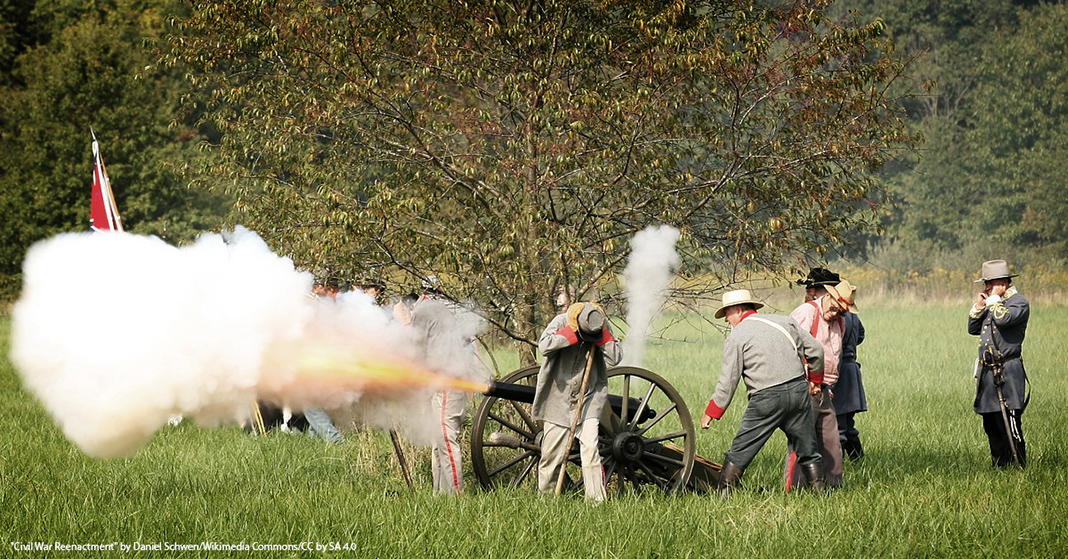
When I was about nine years old, my dad decided to take me to a local Civil War reenactment. I’m from a small town that’s famous for having one of the best reenactments around, drawing thousands of people every year. I loved history and had studied the Civil War, so my excitement for this trip rivaled that of going to Disney World.
I walked around taking it all in. Everything was just as I had read and expected it to be—men and women cooking over campfires next to their tents, sharing stories from the past; the sound of cannon blasts so loud that my ears hurt; soldiers in uncomfortable-looking uniforms carrying rifles with bayonets that made them taller than the men carrying them. It was all so epic.
Then I heard it. A man screaming in pain, or at least acting like it. I turned the corner and saw the medical tent. I froze. The pile of severed limbs covered in “blood” had probably been purchased from a novelty store, but they were all too real to my pre-adolescent eyes. A man in a once white, now crimson apron was wielding an instrument that looked a lot like my dad’s hacksaw. Then I noticed the “wounded” man surrounded by several other men holding him down. Young as I was, I could easily figure out what was going to happen next. The experience shocked me. What I had just witnessed was all I could think about for the rest of the day.
My entire understanding of the Civil War changed in an instant. It wasn’t as though I hadn’t read about the medical treatments of the time, but that was just words in a textbook that I quickly glossed over to get to the exciting battles. Now the realities of the war had become palpable for me.
Sometimes the only way to learn about something in a way that allows for true understanding is to experience it. In many cases, we think we (or our children) understand a topic only to find out that we really didn’t comprehend it at all. That’s why learning activities are so important. Actually experiencing something builds a foundation for learning that you can’t create by merely reading a book or watching a video. Not all activities and experiences need to be shocking like my example. In fact, most won’t be. But simple activities, such as this balloon craft, put skills taught in a lesson into a physical form and accomplish the same thing.
That’s why I always encourage homeschool parents to also purchase the Teacher Editions of BJU Press textbooks. Parents typically don’t have time to come up with creative activities to reinforce each lesson. The Teacher Editions make this simple by including a large variety of activities for different learning styles. The time you save in planning and the benefit to your child’s learning experience easily offset the extra expense.
Be sure to check out some learning activity ideas in the posts below.